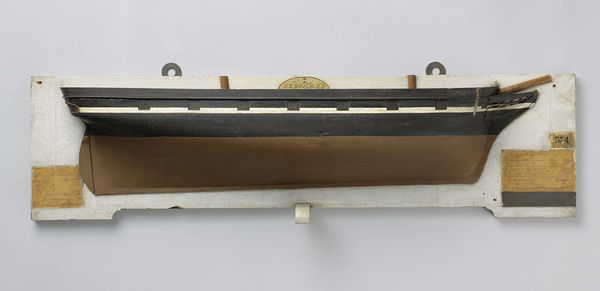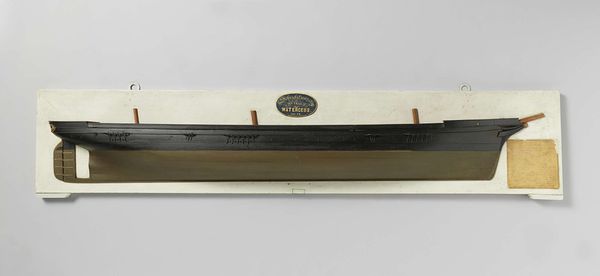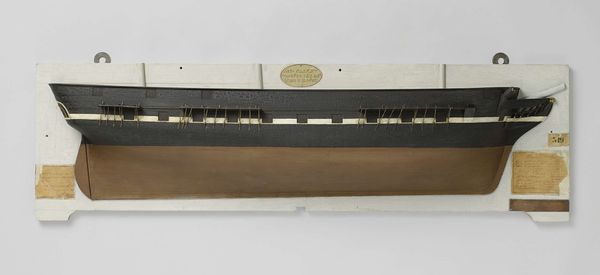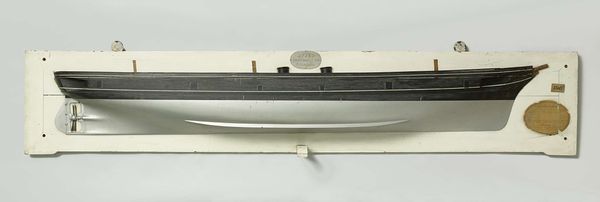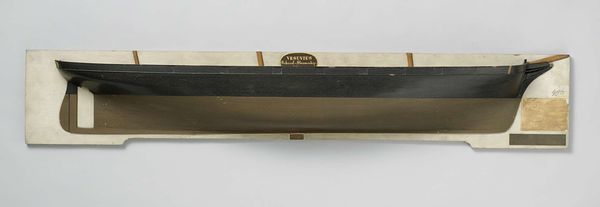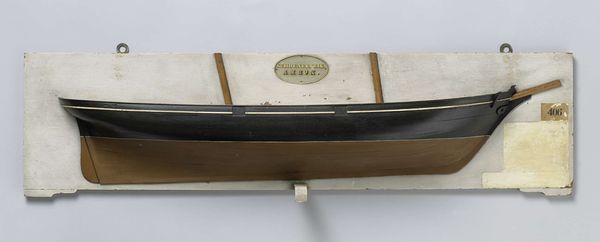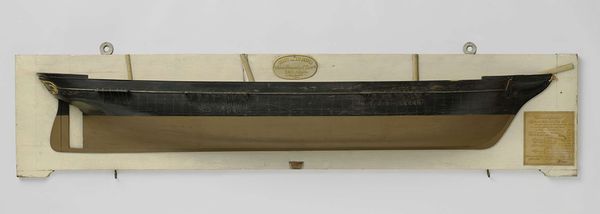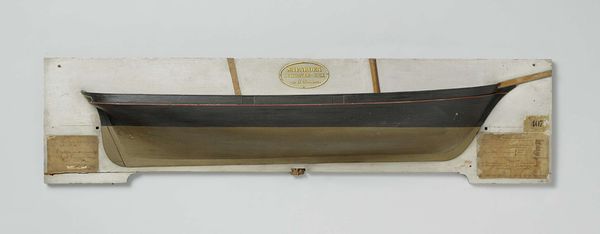
sculpture, wood
#
sculpture
#
sculpture
#
wood
Dimensions: height 39 cm, width 177 cm, depth 20 cm
Copyright: Rijks Museum: Open Domain
Curator: Here we have a "Half Model of a Screw Steamer," created around 1868 by Rijkswerf Amsterdam. Editor: My first thought is the tension between industrial might and elegant design; even this partial view exudes incredible power contained in that hull. Curator: Absolutely. Considering its origins with Rijkswerf Amsterdam, it embodies Dutch naval ambition during a time of intense technological advancement. This wooden model offers a window into both material science and colonial aspirations, doesn’t it? Editor: Undeniably. It also brings the materiality to the fore. The fact it’s a half model—the means of production displayed plainly— emphasizes that relationship between the abstract design and the very tangible process of shipbuilding and its reliance on human labour. Think of the shipwrights shaping that wood. Curator: Indeed. We see the potential for international power projection and, critically, the infrastructure that facilitates it. This era represents when race and the exploitation of the other was accelerated through technological process like this, thus making technological design itself inherently part of the issue. Editor: The fact that it is a sculptural model rather than the real thing, further complicates that discussion. While we reflect on material agency, it cannot replace historical responsibility, especially in reference to production of ships like these which extended into trade and other forms of labour extraction in colonies across the globe. Curator: Precisely. Understanding the broader context enables us to approach it ethically, examining how technology perpetuates, as well as disrupts. Editor: And looking closely at its materiality makes me ponder on not just labour practices, but the environmental impact and use of those very same vessels for colonial enterprises and war efforts alike. These pieces tell the bigger story and not the romantic one often prescribed. Curator: Thinking about the work in that light pushes past an aesthetic experience and confronts histories of power and injustice that it implies. Editor: It becomes something bigger than itself. Curator: Precisely! The model offers much if you consider both what it stands for and its relationship to the historical and socio-political framework in which it was created.
Comments
No comments
Be the first to comment and join the conversation on the ultimate creative platform.
